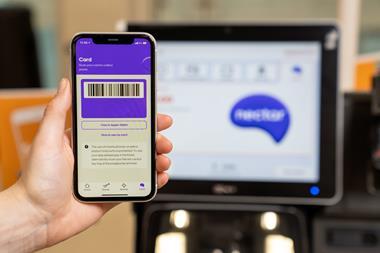As the DIY chains frantically marked down their barbecues last June in a bid to shift stock after a dismal May, bosses at Asda held firm, and waited for the sun to come out again. Which it did, exactly when they predicted it would, thanks to Professor Krick. And while rivals' shelves were left empty when demand picked up again, Asda's stock sailed through the checkouts in July.
The secret? Technology informed by Krick's theories and first employed by the US military to plan campaigns which uses the jet stream to predict weather trends up to 14 months in advance. This has allowed retailers such as Asda and Debenhams to plan the introduction and phasing of seasonal ranges with military precision, because they know what the weather is going to be like next year.
Weather, the single most important external factor affecting consumer demand, has until recently been the one thing retailers and manufacturers cannot predict, says Chris Cawthorn, MD of Planalytics the company helping Asda put Krick's theories into practice. Forecasting has instead relied on historical sales data and a few wet fingers in the wind.
By correlating events in the jet stream a wave pattern going on in the upper atmosphere with surface weather, Planalytics can predict when the hot spells will come, how long they will last, and by combining this information with two years of historical EPoS data, calculate the impact the weather will have on demand. Put simply, once it has cross-referenced its weather forecast with historical product demand patterns, Planalytics can predict more accurately than before when a product season will start, when it will peak and when it will end.
The technology also enables customers to determine product pricing geared to optimum selling times, when it is best to promote and what mechanic to use, as well as helping suppliers schedule production more effectively.
Given a lot of non-food items sourced by retailers like Asda come from overseas, and are made and ordered months in advance, short range weather forecasts are not much use, says Cawthorn.
"We are in discussion with a company that grows melons for the supermarkets. It takes 12 weeks to grow a melon, sales of which are highly weather dependent. If you know what the weather, and therefore what the demand is going to be like, you can plan exactly how many to grow and when to start."
Gardening tools were phased into Asda stores two weeks early in 2002 thanks to advance warnings from Planalytics of unusually mild weather, while Asda also held off marking down the range in late summer due to a warm September also predicted by Planalytics.
While sales of some products, such as sunscreen and de-icer, are more obviously affected by weather than others, a whole host of products sold in supermarkets are influenced by weather changes, says Cawthorn."Cough and cold remedies, ice creams, car care products, soft drinks, desserts, beer, salads, soups, gardening equipment, outdoor toys, paddling pools..."
Planalytics is working with a major brewer to look at the best time to promote lager, which always sells better than bitter when the weather gets hot, he observes. "If you promote beer in normal weather, sales might go up 100%. It may be that if the weather is scorching, the same promotion might drive sales up 300% which will put far more pressure on the supply chain."
Soup is another interesting category, he says. "Sales tend to go up in cold weather. So is it worth promoting soup in winter if people are going to buy it anyway, or would a promotion in fact help drive market share or brand awareness at a time when a lot of people are shopping the category?"
Critical level
And then there is ice cream: "We worked closely with Asda on this. The first thing you notice is that sales of water-based ice lollies tend to go up when the temperature reaches a certain critical level."
Next on the radar is George clothing, with trials due to start in the summer.
The work with Asda has been so successful that Planalytics is now finalising implementation with a second grocery multiple and in the advanced stages of discussions with another, says Cawthorn.
"People wrongly assume weather patterns will repeat that if May was miserable last year, it will be this year. In fact, this happens less than 25% of the time. Our forecasts are accurate that doesn't change."
{{ANALYSIS }}
The secret? Technology informed by Krick's theories and first employed by the US military to plan campaigns which uses the jet stream to predict weather trends up to 14 months in advance. This has allowed retailers such as Asda and Debenhams to plan the introduction and phasing of seasonal ranges with military precision, because they know what the weather is going to be like next year.
Weather, the single most important external factor affecting consumer demand, has until recently been the one thing retailers and manufacturers cannot predict, says Chris Cawthorn, MD of Planalytics the company helping Asda put Krick's theories into practice. Forecasting has instead relied on historical sales data and a few wet fingers in the wind.
By correlating events in the jet stream a wave pattern going on in the upper atmosphere with surface weather, Planalytics can predict when the hot spells will come, how long they will last, and by combining this information with two years of historical EPoS data, calculate the impact the weather will have on demand. Put simply, once it has cross-referenced its weather forecast with historical product demand patterns, Planalytics can predict more accurately than before when a product season will start, when it will peak and when it will end.
The technology also enables customers to determine product pricing geared to optimum selling times, when it is best to promote and what mechanic to use, as well as helping suppliers schedule production more effectively.
Given a lot of non-food items sourced by retailers like Asda come from overseas, and are made and ordered months in advance, short range weather forecasts are not much use, says Cawthorn.
"We are in discussion with a company that grows melons for the supermarkets. It takes 12 weeks to grow a melon, sales of which are highly weather dependent. If you know what the weather, and therefore what the demand is going to be like, you can plan exactly how many to grow and when to start."
Gardening tools were phased into Asda stores two weeks early in 2002 thanks to advance warnings from Planalytics of unusually mild weather, while Asda also held off marking down the range in late summer due to a warm September also predicted by Planalytics.
While sales of some products, such as sunscreen and de-icer, are more obviously affected by weather than others, a whole host of products sold in supermarkets are influenced by weather changes, says Cawthorn."Cough and cold remedies, ice creams, car care products, soft drinks, desserts, beer, salads, soups, gardening equipment, outdoor toys, paddling pools..."
Planalytics is working with a major brewer to look at the best time to promote lager, which always sells better than bitter when the weather gets hot, he observes. "If you promote beer in normal weather, sales might go up 100%. It may be that if the weather is scorching, the same promotion might drive sales up 300% which will put far more pressure on the supply chain."
Soup is another interesting category, he says. "Sales tend to go up in cold weather. So is it worth promoting soup in winter if people are going to buy it anyway, or would a promotion in fact help drive market share or brand awareness at a time when a lot of people are shopping the category?"
Critical level
And then there is ice cream: "We worked closely with Asda on this. The first thing you notice is that sales of water-based ice lollies tend to go up when the temperature reaches a certain critical level."
Next on the radar is George clothing, with trials due to start in the summer.
The work with Asda has been so successful that Planalytics is now finalising implementation with a second grocery multiple and in the advanced stages of discussions with another, says Cawthorn.
"People wrongly assume weather patterns will repeat that if May was miserable last year, it will be this year. In fact, this happens less than 25% of the time. Our forecasts are accurate that doesn't change."
{{ANALYSIS }}
















No comments yet